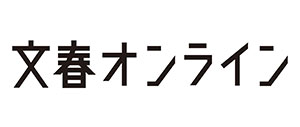Must-See: Ingenious Flood Measures of Kochi Castle
Related Articles

If one were to describe the tenshu (the castle tower) of Himeji Castle as “graceful” and that of Matsue Castle as “magnificent,” the word “dynamic” is perfect for that of Kochi Castle.
It possesses a form that resembles a lively movement of the rough waves of Tosa Bay. It uses the honki-nage method original to Tosa province (now Kochi Prefecture) which allows the corners of the eaves to forcefully curve outwards in four directions.
The corners of the rooftops are adorned with onigawara (ogre tiles) which had been fixed using a unique method, and many more onigawara embellish the rooftop. The overlapped sections of the eavesdrops give an impression of a handsome male, while the curve of the karahafu gable at the center possesses a delicate feminine beauty.
Another characteristic of Kochi Castle is that its tower doesn’t have a raised foundation. Most castle towers are built on a raised foundation (called tenshudai), but the Kochi Castle tower is built directly on the stone walls that are well stacked along the terrain. Therefore, when visitors look up, they can see the lines of the stone wall, the castle tower and the mud wall intersect exquisitely, creating a unique form.
Built by Kazutoyo Yamauchi After the Battle of Sekigahara
Kochi Castle was built by Kazutoyo Yamauchi, who was awarded the Tosa province from Tokugawa Ieyasu after the Battle of Sekigahara. The castle was built in the 6th year of Keicho era (1601) in the place where the Otakasakayama Castle was once built by Chosokabe clan. It is said to have been completed in 1611, but it is believed that Kazutoyo entered the castle after the Honmaru Goten (main palace) and Ninomaru compound were completed in August 1603.
The castle tower takes the shape of a watchtower and has four layers and six stories. It was destroyed by a large fire in Kyoho 12 (1727) and rebuilt in Kan’en 2 (1749). The reconstructed castle tower seems to follow the design of the earlier one, adopting the form of an old-fashioned watchtower.
Once visitors reach the top floor of the main keep, they can walk on the breezy wrap-around veranda which has handrails embellished with baluster finials, while taking in the panorama view.
People have an impression that most castle towers have wrap-around verandas, but they are not suitable for wooden buildings because they corrode when exposed to wind and rain. Many castles have them attached as decorations. A castle with real wrap-around veranda people can circle around is quite rare.
For Tozama Daimyo (feudal lord) Kazutoyo, building a castle that is too impressive could have cost his neck. Initially, having a wrap-around veranda was considered too conspicuous and was opposed by ministers, but it is said that it was realized with the permission of Ieyasu. The handrail is lacquered and has knobs in the shape of gems. One can feel Kazutoyo’s aesthetic sense and devotion.

Ingenious Measures to Counter Heavy Rain
Kochi Castle is located on Otakasaka Hill, which is in the center of the Kochi Plain and has an altitude of about 44 meters. Until the Middle Ages, the Kochi Plain was almost an inland sea, and the area suffered repeated flooding.
Even today, Kochi Prefecture is a high rainfall area with the most or the second most annual rainfall in Japan. At the beginning of the castle’s construction, the castle hill was called Kawanakayama because it was located between the north and south rivers but after suffering numerous flooding, they found the name ominous and changed it to Kochisan.
Kochi Castle has many ingenious measures to drain out the rain. It is designed so that the rain falling from the walls of the castle does not touch the stone wall directly and instead falls to the ground through a stone gutter. Every castle has a drainage facility, but the stone gutters in Kochi Castle are large in size and number.
The pavement stones that serve as water pans are also considerably larger and stronger than the water pans of other castles that are usually made up of tiles. The ground is in a spiral shape, and the rain that falls inside the castle is drained underground in three directions.
The plaster painted on the wall is called Tosa plaster, another technique unique to the region. One of the features of Tosa plaster is that it is resistant to rain because it does not use glue, as opposed to the more common hon toso plaster used in other Japanese castles. The nageshi-type drainer found on the walls and mud walls of the buildings, including the hem of the wall in front of the Kurotetsu Gate, is also a device to prevent rainwater from flooding.
Finding these regional characteristics is another perk of visiting castles. Walls covered with Tosa plaster and roofs that use draining tiles are not uncommon in the castle’s neighboring houses. The Minami Sake Brewing that I visited for this magazine also had walls of Tosa plaster and roofs with draining tiles. One can get a glimpse of how the castle construction utilized local techniques.
Existing Buildings are Testaments to the Genius of Their Designs
Since 11 of the 15 existing buildings are closely located in the main enclosure, compared to most other castles where the castle towers stand alone, one can see the building’s original layout and their functions. Moreover, the castle tower is one of the only 12 remaining nationwide, and the Honmaru Goten (the main palace) is one of the only four ones left in the country.
The Honmaru Goten is not so big, and the buildings are laid out in an irregular fashion, with each connected by a fence. The walls have spaces, and machicolation is installed on the floor of the buildings for strong defense. The mushamado window with horizontal lath installed on the Yasama wall functioned as another defense facility as it gave the watchers a wider view compared to a small gap.
The structural highlight is the front Tsumemon Gate. It is a rare design that blocks the neck ditch that divides the Honmaru palace and the Ninomaru compound, with the first and second floors crossing over. The door on the 1st floor is off position so that invaders cannot easily pass through. It is called Tsumemon because there was a salt brewery in case of a siege on the first floor and a station for the head and senior officials on the second floor.
The exit of the bridge corridor on the 2nd floor is designed like an uzumimon (sunken gate), and is protected by a sturdy door. In case of an attack, one can break this bridge to close off the castle. Once this path is closed, the enemy will not be able to reach the main palace.
Visitors should also check out the shinobi gaeshi (spikes) installed on the castle tower, the only one seen on a castle tower in Japan. The spikes, installed on the north side of the ground floor of the building, look like iron skewers and keep invaders out. One can feel the essence of a castle where beauty and combative functions coexist.
This article is a translation of the Japanese original published in the June 2021 issue of Bugeishunju magazine.




